Biogeochemical cycling and ground vegetation
Daniel Christen
Noureddine Hajjar
Peter Waldner
Alois Zürcher
Daniele Pezzotta
1996 - 2035
Contents
Nutrient fluxes, nutrient status of the stand and ground vegetation on the LWF sites ¶
The better understanding of the processes driving the dynamics of forest ecosystems requires the documentation of the constantly interacting compartments and fluxes of the biogeochemical cycle. In this project we study two fluxes (deposition of nutrients through precipitation and litterfall) and two compartments (foliage and ground vegetation).
Project aims ¶
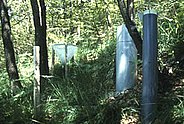
- Quantify two important terms of the annual nutrient budget at the stand level (throughfall and litterfall).
- Estimate total atmospheric deposition, and thus monitor the pollution climate the forest ecosystem is subjected to. From the incident precipitation and throughfall data, changes in the precipitation chemistry influenced by the forest canopy (foliar leaching and uptake) can be discriminated and the contribution of wet and dry deposition of certain atmospheric compounds can be inferred.
- Assess the nutrient status of the forest stands (foliar analysis) and detect possible deficiencies or imbalances.
- Assess spatial and temporal variations of the floristic composition of the ground vegetation. Ground vegetation is an important compartment of the ecosystem in terms of biodiversity and it takes an active part in the general functioning of the ecosystem. It is also a useful bio-indicator of the site conditions and its monitoring may enable the detection of environmental changes. This latter aspect is detailed in the description of the project "Nitrogen and ground vegetation".
- Collect data to parameterize, calibrate and validate models for Swiss conditions.
- Assess the risks of development of critical situations, such as exceedances of critical loads.
Methods ¶
The sampling methods are based on the methods recommended in the manuals published by the European ICP programmes (ICP Forests, see References) The sampling design is such that 1) a trade-off is achieved between the representativeness of the estimates and the logistical costs 2) direct comparisons between the various compartments and fluxes (soil, vegetation, litterfall, throughfall) are possible.
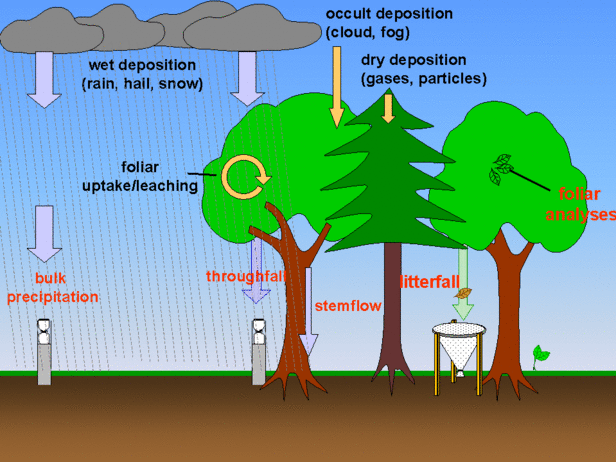
Precipitation, throughfall and stemflow sampling on LWF sites ¶
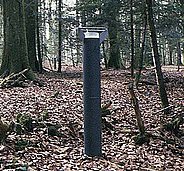
Incident precipitation is sampled by 3 funnel-type bulk collectors in an open area, next to a meteorological station also run by LWF. Sites where snow may be important are equipped with a bucket-type snow collector. In the forest stand, throughfall is sampled by 16 collectors identical to those used in the open. Four snow collectors are used on plots where snow precipitation is expected to be abundant.
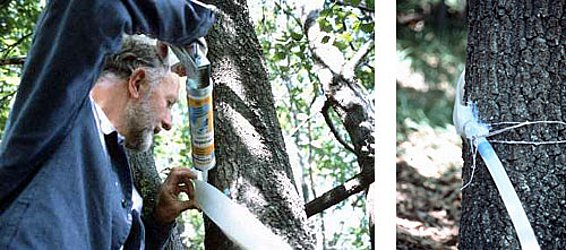
Stemflow is sampled with gutter-like collectors coiled in spiral around the stem of 5 individual broadleaved trees, and connected to an automated tipping-bucket system, allowing continuous recording of volumes and sampling of representative proportional fractions. Stemflow is currently measured on one beech stand.
Precipitation samples are collected from the field every two weeks and sent or brought to the WSL laboratory. Each sample is prepared in duplicate, one for chemical analysis at the WSL Central Laboratory, a second for storage at -20°C or +2°C until validation of the analyses. Ammonium (NH4+) is determined colorimetrically with automated flow injection analysis (FIA). Calcium (Ca), magnesium (Mg), potassium (K), sodium (Na) and total phosphorus (P) are determined on acidified samples (1.2% HNO3-Suprapur) with induced coupled plasma atomic emission spectrometry (ICP-AES). Nitrate (NO3-), sulfate (SO42-) and chloride (Cl-) are determined with ion chromatography (IC). Total dissolved nitrogen (TDN) had been measured with alkaline persulfate oxidation (converting all nitrogen into nitrate) until the beginning of 2001. Since March 2001 TDN has been analyzed after acidification to pH 2 to 3 with combustion at 720 °C (converting all nitrogen to nitrogen monoxide) and chemiluminescence gas detection using a TOC-V analyser (Shimadzu, Tokyo, Japan).
Litterfall ¶
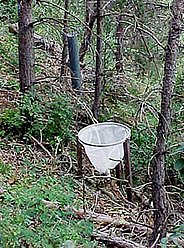
Litterfall is sampled on 10 plots with 10 collectors emptied monthly (Fig. 5). On plots in the alpine region, the sampling interval is usually extended to the whole winter period. In the laboratory the litter samples are oven dried at 65 °C and sorted into leaves or needles of the main species, leaves or needles of other species, twigs/bark with diameter < 1 cm, branches with diameter > 1 cm, fruits of the main species, fruits of other species, and rest (lichen, moss, flowers, indefinable parts). The sorted litter samples are then ground and solubilised for chemical analysis. Total C (carbon) and total N (nitrogen) are determined with ion chromatography (IC). Calcium (Ca), magnesium (Mg), potassium (K), sodium (Na), boron (B), aluminium (Al), copper (Cu), iron (Fe), manganese (Mn), nickel (Ni), total phosphorus (P) and total sulphur (S) are determined with induced coupled plasma atomic emission spectrometry (ICP-AES). All chemical analyses are carried out at the WSL Central Laboratory.
Nutrient status (foliar analyses) ¶
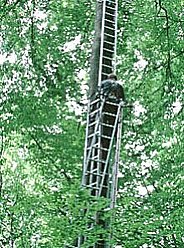
Foliage is sampled (by tree climbing) every second year (Fig. 6). Five trees of each main species are sampled in the buffer zone of the LWF plots. After drying at 65 °C the weight of 100 leaves or 1000 needles is determined. The samples are then ground and solubilised for chemical analysis like the litterfall samples.
Results ¶
Foliar Analyses
Atmospheric Deposition
Litterfall (cming soon)
Links ¶
- International Co-operative Programme on Assessment and Monitoring of Air Pollution Effects on Forests (ICP Forests)
- Co-operative Programme for Monitoring of the Long-Range Transmission of Air Pollutants in Europe (EMEP)
- Federal Office for the Environment (FOEN)
- National Air Pollution Monitoring Network (NABEL)
- Ammoniak-Immissionsmessungen in der Schweiz (Bericht, PDF, 3.4 MB)
- Research Group for Environmental Monitoring (FUB)
- Institute for Applied Plant Biology (IAP)